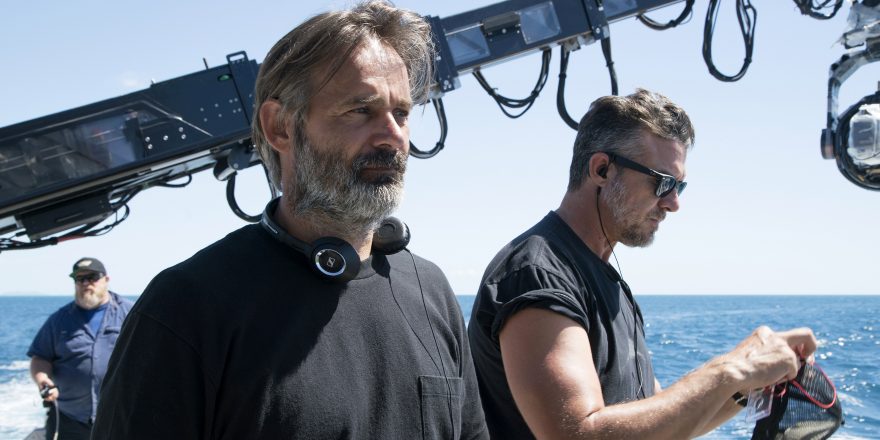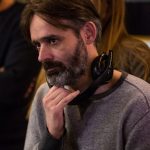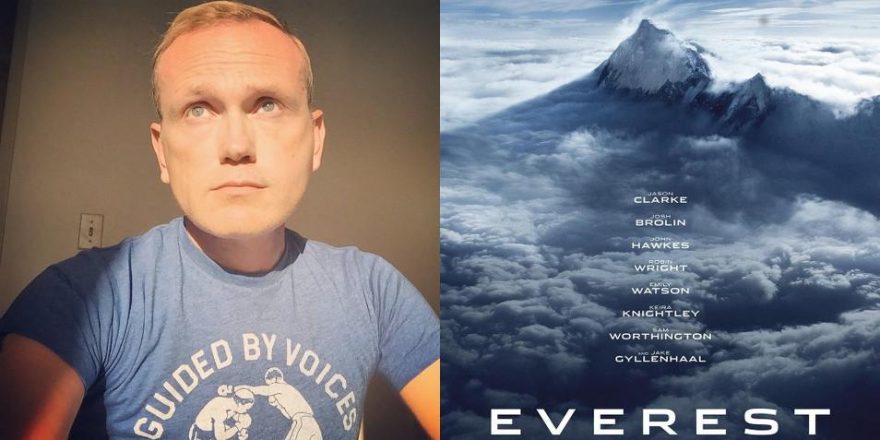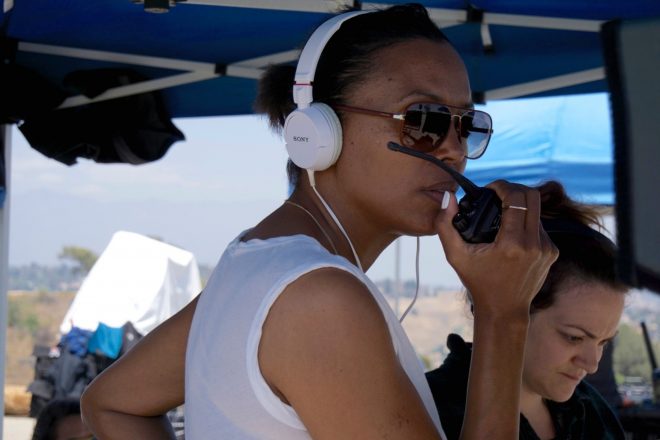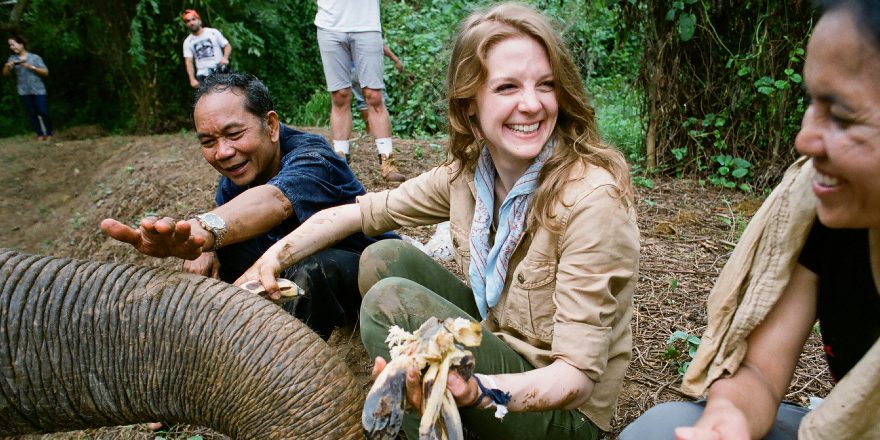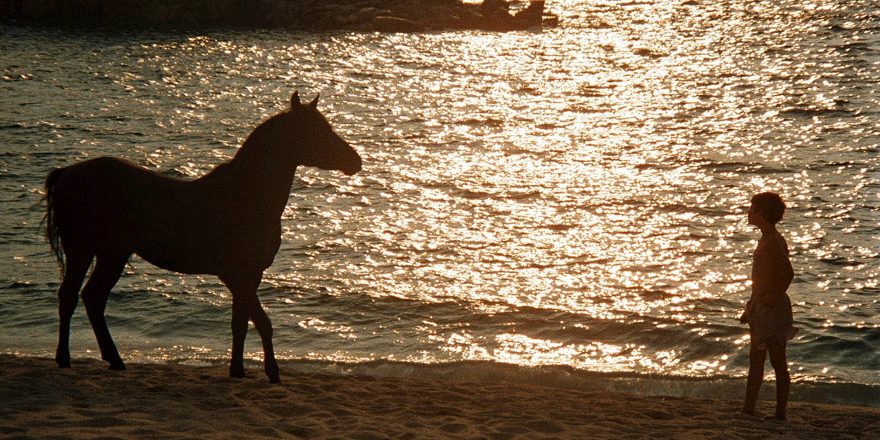I have confidence in my abilities in extreme environments; that’s a big part of me. I’m not scared of challenges, I love them.
I remember when I was at basecamp for the first time when I was making Everest, I looked around at where I was and teared up with joy that I’d been given this opportunity. No part of me was worried. I find my confidence when I’m making a film. When I’m releasing movies, I think, “Oh, my God. I have no idea how this is going to be received …” but when I’m making them, the fear is not a part of me at all. I love getting my head into the challenge, thinking it through and finding a way to make things work. I think that attitude comes from starting out as a filmmaker in Iceland.
—-//—-
Iceland is as extreme as any country can be, in terms of weather, in terms of light. When Everest came out a few years ago, people asked me how I prepared for the film, and I joked that I did it by walking to school in a blizzard every morning.
I grew up in Reykjavik, the capital city of Iceland. My father had stables outside of the city, so I’ve had horses since I was a kid. I love horses, and spent more time at the stables than in Reykjavik. From a very young age already, I had a deep need to be connected to nature. As soon as school was over, I would go up there and spend all my time with the horses. I would ride every summer for two or three weeks, traveling across the Highlands on horses.
I sailed from when I was eight years old until I was 20, when I started theatre school. I wasn’t some movie-mad kid running around with an 8 mm camera wanting to be a filmmaker, I was mostly just playing sports and being in nature. I skied and played soccer and handball and chess, but I was most deeply into horses and sailing. It wasn’t what my friends were doing, but these were the things that had the strongest draw for me. It was about being in touch with nature. I never enjoyed motorboats, and didn’t understand why until I realized that it’s because they don’t capture the energy of nature; sailing with the wind, however, inspired me right from the very start. When you’re sailing, you are capturing something that’s part of nature.
When as a young man I became interested in acting and directing, I saw a Russian war movie called Come and See, directed by Elem Klimov. I remember that it affected me on a very deep level, because it felt existentialistic and visceral in ways that I hadn’t seen in cinema before. What stayed with me was cinema’s potential to reach an existential place where the distinction between being a man and an animal doesn’t exist anymore. It’s important to remember we are animals too. When we eat meat, we need to eat it off the bones, because if you suddenly start eating boneless meat out of plastic boxes, you lose the connection with who you really are. That’s how you understand what you’re eating.
When I was a drama student, I found that you can’t really portray nature and how it affects you in a real way in theatre. But I saw the potential that cinema had to do that. You can see a dialogue with nature in all my work, even in films that are not obviously about that subject. Nature has always been a big of a part of me, and I like to go beyond the intellectual and into the visceral. Cinema allows you to do that, and so I love when I get an opportunity to tell stories that have nature as part of their DNA.
When I was making my film The Deep, about a fisherman who swims back through the freezing ocean after his boat sinks, I ended up doing some of the swimming stunts off the Icelandic coast. When we were shooting the beaching scene, my lead actor, Ólafur Darri Ólafsson, got a little scared. We had to send someone to swim up against the cliffs as a stand-in for him, but nobody would do it, so I decided, “OK, I’ll just have to do it myself.” I looked at the sea, calculated that every seventh wave that came in was big and told him, “Go out after the big one comes out. You’ll have enough time to swim out, and then wait for the big one to carry you in.” I went out there and did it for him to show him how it works, so then he could do it. There’s footage of me crawling amongst these huge waves, basically being thrown up against the cliffs. Because I had sailed so much, though, I wasn’t afraid of the water. I pretty much knew what I was doing in the water and how the water functions. And I really liked it, so I wasn’t hurt at all. But me doing that came from necessity. I needed to figure out a way to get that shot. I might sound like a daredevil or somebody who’d risk everything, but it was calculated. I know what I’m doing in those circumstances. I’m a father of five. I wouldn’t put myself in harm’s way.
When you make a film in the wild, you can’t control the elements, you have to work with them. You have to bow your head to Mother Nature and take what she gives you, move with her rhythms. You have to dial in. If you’re on the sea and the waves are big, you have to just figure out a way to do this by understanding how the sea functions, instead of only understanding what you want.
When you’re shooting Everest, you can’t shout at a mountain and tell it to start doing what you want. If one hill is too snowy, then you go find another hill. It’s logical stuff, but sometimes when people get lost in the noise of filmmaking and the madness of coming in on time, then they lose their instinct to listen in and understand what’s going on.
On Adrift, I had one of the greatest D.P.s, Bob Richardson, working with me, so from the beginning it was very important to me that we shoot as much as possible on the sea. This was a nightmare for the studio, because of planning and insurance, and because they had less control. But from my perspective, there’s more that can go wrong in a studio, particularly because of all the complicated equipment, so I could actually say, “No, I will deliver the film by this time, because I know the ocean is not that unpredictable.” And, in the end, I convinced them, and we did deliver the film on time.
It was still quite challenging, though, because we wanted to make the film very cinematic. My method is that I always work with reality as a base, so I shoot everything I can in the elements and always start in the most difficult places. Doing it that way affects the actors; it strips them down, makes them raw. And then everything you do after that, you’re working from that place of reality. I tried to do the same with Everest. We shot everything in the mountains that we could, and then we did the rest after. You can’t shoot a storm on the top of Everest, for example. You’re going to kill some people.
When I’m looking for people to work with on projects in such extreme physical environments, I’m very honest and clear about what’s involved. Sometimes, people don’t think they are capable of doing the film, so part of my job is also helping them through it. I’ll tell them, “No, you can do it. And I will lead you through it.” And then afterward they’re extremely happy and proud of themselves to have done something that they otherwise wouldn’t have.
Shailene Woodley said during a Q&A that making Adrift was the best experience of her life, not only in terms of making a movie, but also in terms of just being there. Even though these films can be extremely difficult, at the end of them you feel like you’ve done something special. I think the audience also senses that you really pushed yourself, so they could get more of an experience from watching the film.
—-//—-
Since coming to Hollywood, I have been offered big franchise movies, computer-game adaptations and superhero films, but it’s just not something that I’m drawn to in the same way. Ultimately, I am drawn to movies about the human condition. Time is finite, and I just want to do something that sustains my passion for filmmaking, because the last thing I want to do is start making movies just for the sake of money or bigger budgets. I’m very lucky to have the opportunity to work on a bigger stage and reach larger audiences, but I never want to lose the thread of why I make films, because it’s something I want to do for the rest of my life.


